This article was co-authored by Jason Myerson, DPT, DMT, OCS, FAAOMPT. Jason Myerson is a Physical Therapist and a Certified Orthopedic Specialist. He is affiliated with Performance Physical Therapy & Wellness with clinics located in Connecticut. He serves as adjunct faculty in the Physical Therapy Department at Quinnipiac University. Jason specializes in helping active people get back to hobbies, activities, and sports they love while utilizing an integrated approach to wellness. He holds an MA in Physical Therapy from Quinnipiac University and a Doctorate in Physical Therapy (DPT) from Arcadia University. He is Residency and Fellowship trained in Orthopedic Manual Therapy, achieved a Doctorate in Manual Therapy (DMT) and became a Fellow of the American Academy of Orthopedic Manual Physical Therapists (FAAOMPT).
There are 12 references cited in this article, which can be found at the bottom of the page.
This article has been viewed 646,206 times.
Modern comforts and busy schedules have made it all too easy to slouch. Slouching can cause major health problems over time, including headaches, pulled muscles, and back pain. Prolonged slouching also leads to musculoskeletal stress on both your vertebrae and the discs between the vertebrae. We’ve put together this list of tips to help you stop slouching and avoid these kinds of issues.
Steps
Expert Q&A
Did you know you can get expert answers for this article?
Unlock expert answers by supporting wikiHow
-
QuestionHow can I improve my posture at work?
 Jason Myerson, DPT, DMT, OCS, FAAOMPTJason Myerson is a Physical Therapist and a Certified Orthopedic Specialist. He is affiliated with Performance Physical Therapy & Wellness with clinics located in Connecticut. He serves as adjunct faculty in the Physical Therapy Department at Quinnipiac University. Jason specializes in helping active people get back to hobbies, activities, and sports they love while utilizing an integrated approach to wellness. He holds an MA in Physical Therapy from Quinnipiac University and a Doctorate in Physical Therapy (DPT) from Arcadia University. He is Residency and Fellowship trained in Orthopedic Manual Therapy, achieved a Doctorate in Manual Therapy (DMT) and became a Fellow of the American Academy of Orthopedic Manual Physical Therapists (FAAOMPT).
Jason Myerson, DPT, DMT, OCS, FAAOMPTJason Myerson is a Physical Therapist and a Certified Orthopedic Specialist. He is affiliated with Performance Physical Therapy & Wellness with clinics located in Connecticut. He serves as adjunct faculty in the Physical Therapy Department at Quinnipiac University. Jason specializes in helping active people get back to hobbies, activities, and sports they love while utilizing an integrated approach to wellness. He holds an MA in Physical Therapy from Quinnipiac University and a Doctorate in Physical Therapy (DPT) from Arcadia University. He is Residency and Fellowship trained in Orthopedic Manual Therapy, achieved a Doctorate in Manual Therapy (DMT) and became a Fellow of the American Academy of Orthopedic Manual Physical Therapists (FAAOMPT).
Posture Specialist Make sure your chair is high enough that your hips are level with or slightly higher than your knees when you're sitting. If your chair doesn't have good back support, place a pillow or a rolled-up towel behind your lower back for extra support. You should also double-check that your computer screen is in front of you and eye level. If it's not, raise it so it's eye level or stack it on something like a shoe box.
Make sure your chair is high enough that your hips are level with or slightly higher than your knees when you're sitting. If your chair doesn't have good back support, place a pillow or a rolled-up towel behind your lower back for extra support. You should also double-check that your computer screen is in front of you and eye level. If it's not, raise it so it's eye level or stack it on something like a shoe box. -
QuestionIs carrying a heavy purse bad for you?
 Jason Myerson, DPT, DMT, OCS, FAAOMPTJason Myerson is a Physical Therapist and a Certified Orthopedic Specialist. He is affiliated with Performance Physical Therapy & Wellness with clinics located in Connecticut. He serves as adjunct faculty in the Physical Therapy Department at Quinnipiac University. Jason specializes in helping active people get back to hobbies, activities, and sports they love while utilizing an integrated approach to wellness. He holds an MA in Physical Therapy from Quinnipiac University and a Doctorate in Physical Therapy (DPT) from Arcadia University. He is Residency and Fellowship trained in Orthopedic Manual Therapy, achieved a Doctorate in Manual Therapy (DMT) and became a Fellow of the American Academy of Orthopedic Manual Physical Therapists (FAAOMPT).
Jason Myerson, DPT, DMT, OCS, FAAOMPTJason Myerson is a Physical Therapist and a Certified Orthopedic Specialist. He is affiliated with Performance Physical Therapy & Wellness with clinics located in Connecticut. He serves as adjunct faculty in the Physical Therapy Department at Quinnipiac University. Jason specializes in helping active people get back to hobbies, activities, and sports they love while utilizing an integrated approach to wellness. He holds an MA in Physical Therapy from Quinnipiac University and a Doctorate in Physical Therapy (DPT) from Arcadia University. He is Residency and Fellowship trained in Orthopedic Manual Therapy, achieved a Doctorate in Manual Therapy (DMT) and became a Fellow of the American Academy of Orthopedic Manual Physical Therapists (FAAOMPT).
Posture Specialist
-
QuestionWhat is the best viewing angle for a computer monitor?
 Jason Myerson, DPT, DMT, OCS, FAAOMPTJason Myerson is a Physical Therapist and a Certified Orthopedic Specialist. He is affiliated with Performance Physical Therapy & Wellness with clinics located in Connecticut. He serves as adjunct faculty in the Physical Therapy Department at Quinnipiac University. Jason specializes in helping active people get back to hobbies, activities, and sports they love while utilizing an integrated approach to wellness. He holds an MA in Physical Therapy from Quinnipiac University and a Doctorate in Physical Therapy (DPT) from Arcadia University. He is Residency and Fellowship trained in Orthopedic Manual Therapy, achieved a Doctorate in Manual Therapy (DMT) and became a Fellow of the American Academy of Orthopedic Manual Physical Therapists (FAAOMPT).
Jason Myerson, DPT, DMT, OCS, FAAOMPTJason Myerson is a Physical Therapist and a Certified Orthopedic Specialist. He is affiliated with Performance Physical Therapy & Wellness with clinics located in Connecticut. He serves as adjunct faculty in the Physical Therapy Department at Quinnipiac University. Jason specializes in helping active people get back to hobbies, activities, and sports they love while utilizing an integrated approach to wellness. He holds an MA in Physical Therapy from Quinnipiac University and a Doctorate in Physical Therapy (DPT) from Arcadia University. He is Residency and Fellowship trained in Orthopedic Manual Therapy, achieved a Doctorate in Manual Therapy (DMT) and became a Fellow of the American Academy of Orthopedic Manual Physical Therapists (FAAOMPT).
Posture Specialist
References
- ↑ http://www.today.com/health/quit-your-slouching-how-fix-bad-posture-1D80232323
- ↑ http://www.womansday.com/health-fitness/womens-health/advice/g1136/how-to-improve-posture/?slide=5
- ↑ Jason Myerson, DPT, DMT, OCS, FAAOMPT. Physical Therapist & Certified Orthopedic Specialist. Expert Interview. 15 April 2020.
- ↑ Jason Myerson, DPT, DMT, OCS, FAAOMPT. Physical Therapist & Certified Orthopedic Specialist. Expert Interview. 15 April 2020.
- ↑ http://www.today.com/health/quit-your-slouching-how-fix-bad-posture-1D80232323
- ↑ http://www.mayoclinic.org/healthy-lifestyle/adult-health/multimedia/back-pain/sls-20076817?s=2
- ↑ http://www.mayoclinic.org/healthy-lifestyle/adult-health/multimedia/back-pain/sls-20076817?s=5
- ↑ http://www.womansday.com/health-fitness/womens-health/advice/g1136/how-to-improve-posture/?slide=3
- ↑ http://www.today.com/health/quit-your-slouching-how-fix-bad-posture-1D80232323
- ↑ http://www.mayoclinic.org/healthy-lifestyle/adult-health/multimedia/back-pain/sls-20076817?s=3
- ↑ Jason Myerson, DPT, DMT, OCS, FAAOMPT. Physical Therapist & Certified Orthopedic Specialist. Expert Interview. 15 April 2020.
- ↑ http://www.today.com/health/quit-your-slouching-how-fix-bad-posture-1D80232323
- ↑ http://www.today.com/health/quit-your-slouching-how-fix-bad-posture-1D80232323
- ↑ https://www.spine-health.com/wellness/ergonomics/office-chair-how-reduce-back-pain
- ↑ http://www.today.com/health/quit-your-slouching-how-fix-bad-posture-1D80232323
- ↑ http://www.today.com/health/quit-your-slouching-how-fix-bad-posture-1D80232323
- ↑ https://www.youtube.com/watch?v=z6PJMT2y8GQ&t=6s
- ↑ https://www.spine-health.com/wellness/exercise/easy-chest-stretches-neck-pain
- ↑ http://www.artofmanliness.com/2015/05/19/hunched-back-exercises/
- ↑ http://www.spine-health.com/treatment/chiropractic/how-select-best-chiropractor
About This Article
To stop slouching while you’re sitting down, keep your feet flat on the floor and lean back so your back is flush with the chair’s support. If you slouch worse at work, try moving your chair closer to your desk and adjusting your monitor so the middle of the screen is at eye level. Or, to stop slouching while you’re standing, pull your head back and pull your shoulders down and back until your hands naturally rest beside your thighs with your thumbs facing forward. Keep reading for advice from our Nurse reviewer on which exercises to use to prevent or reverse slouching!

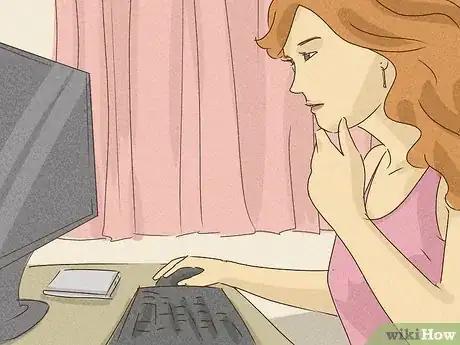


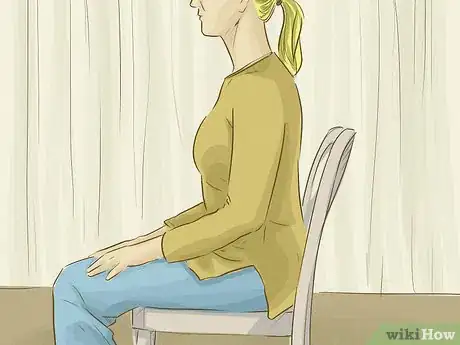
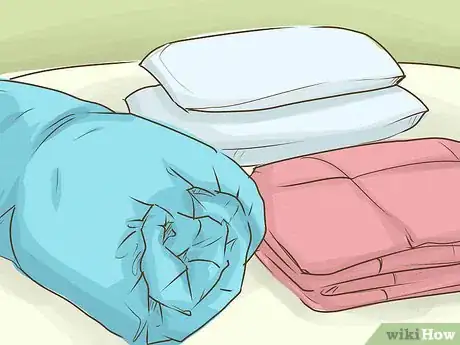



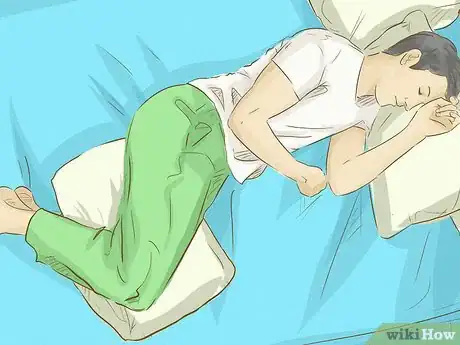
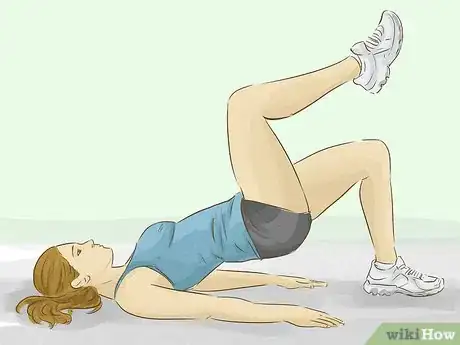

-Step-14.webp)
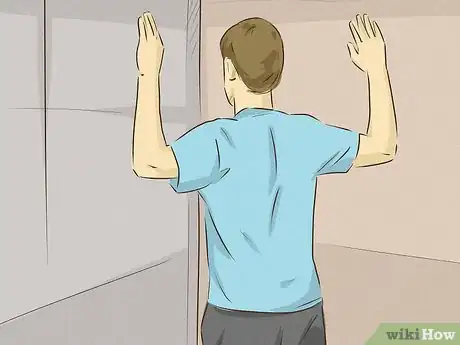

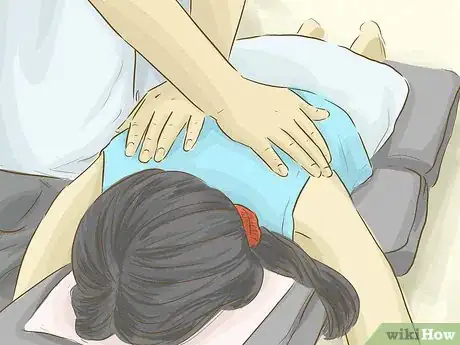
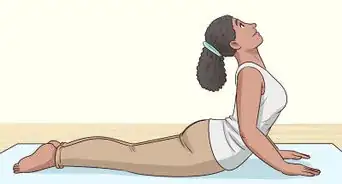






















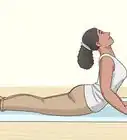






































Medical Disclaimer
The content of this article is not intended to be a substitute for professional medical advice, examination, diagnosis, or treatment. You should always contact your doctor or other qualified healthcare professional before starting, changing, or stopping any kind of health treatment.
Read More...